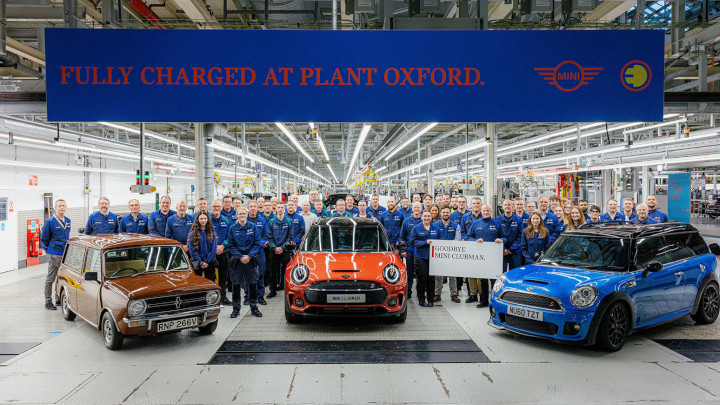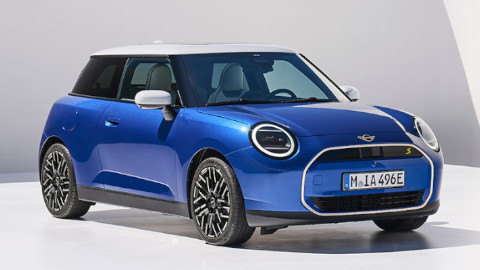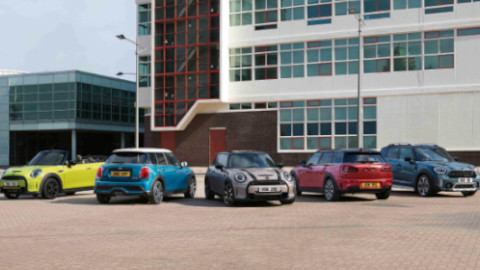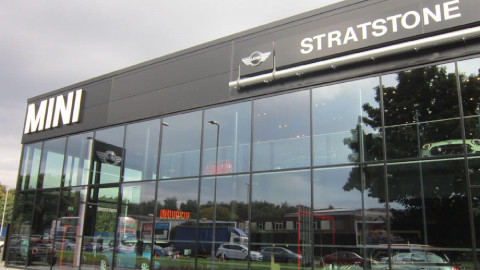
The last MINI Clubman has rolled off the production line at the MINI factory in Oxford - 55 years after the model’s debut in 1969.
With its styling and signature rear split doors, the MINI Clubman remains instantly recognisable around the world.
The end of the MINI Clubman signifies a closing chapter in MINI’s history, while the brand continues to introduce its new, electric MINI family.
Dr Markus Gruneisl, chief executive of the BMW-owned factories in Oxford and Swindon, said: “We are incredibly proud to have built the MINI Clubman at Plants Oxford and Swindon over the last 18 years for customers all over the world. With its departure, we look ahead to welcoming members of the new MINI family to our Oxford and Swindon lines, including a new convertible model which we will start to produce at the end of this year.”
Since its introduction, more than 1.1 million MINI Clubman models have been built, with half of these made at MINI Plant Oxford.
It has been exported to more than 50 countries and the Clubman is driven across the globe, with the UK choosing Midnight Black as its favourite exterior colour.
With its production coming to an end, here is a look at the Clubman’s iconic history, including the cars that influenced its design, pivotal moments for the model and the three Clubman generations.
The Clubman silhouette dates back to the early 1960s, when Mini’s then owner, British Motor Corporation, introduced two estate versions of the original Mini: the Austin Seven Countryman and Morris Mini Traveller.
Featuring a longer chassis and distinctive barn-style rear doors, both models offered additional space and practicality. Alongside the Riley Elf and Wolseley Hornet - which were longer, more luxurious saloon versions of the Mini - these cars paved the way for the first Mini Clubman.
In 1967, British Motor Holdings (previously BMC) set out to streamline the Mini portfolio, hiring renowned designer Roy Haynes to combine attributes from all four models into a single car: the Mini Clubman.
The final design was far more angular and featured a distinctive front nose, which was 10cm longer than the original Mini.
In the end, three production vehicles were based on the Clubman, with the first car debuting in 1969 as a saloon, followed by the Clubman Estate a year later. The third was the 1275 GT, which did not bear the Clubman name but did share its distinctive nose and was famed for its motorsport career.
The seventies brought new features including a more powerful, 45bhp engine and side stripes. Proceeding to dominate the automotive market for over a decade, almost 600,000 Mini Clubman were produced – including 197,000 Estates – before it finished production in 1982 under the 1000HL Estate moniker.
Following a 25-year-gap, the MINI Clubman was reborn in 2007 under MINI’s BMW ownership.
It retained characteristic styling cues from its predecessors - most notably the signature, split rear doors. However, reinstating them into a modern-day vehicle proved quite the challenge for engineers at MINI Plant Oxford.
“We needed to ensure that both doors would always open fully without obscuring the rear lights, which was a legal requirement. Achieving this required fine-tuning and developing the gas strut system to ensure the doors functioned correctly in all climatic conditions,” said lead quality engineer, Guy Elliott, who was part of the development team for Door Systems at the time.
As the first MINI to offer five seats, the Clubman introduced a special Clubdoor – enabling easy access for rear passengers – which was hinged at the rear, and asymmetrically positioned on the one side of the car.
Reflecting on the integration of the Clubdoor, Guy said: “The Clubdoor was pillarless, meaning two moving parts were coming together. We had to ensure the front door and Clubdoor were flush to minimise wind noise when driving. The two glass systems had to be carefully controlled and most importantly, it needed to be watertight, which required precise control measures.”
Inspired by the Morris Mini Van, MINI introduced the world’s first premium compact delivery van in 2013, dubbed the MINI Clubvan. Retaining five doors but with only two seats, the model offered businesses a larger, easily accessible loading area with a completely flat floor.
With a bulkhead to protect the driver and passenger, the Clubvan cargo area could be loaded roof high, with a maximum payload capacity of 500kg. Recessed into the floor were six heavy duty attachment loops, which prevented objects from moving around in transit, while multiple 12-volt sockets could be used to power electrical equipment.
With the third generation in 2015 the Clubman grew, offering a boot capacity of up to 1,250 litres, enhanced usability thanks to four full-sized doors and an 8-speed Steptronic transmission – a first for the MINI brand.
Numerous other features made their brand debut on the Clubman, including an electric parking brake, full electric seat adjustment and the optional MINI Yours Interior Styles with backlit door bezels.
Its launch was closely followed by the introduction of the Clubman ALL-4, MINI’s first all-wheel drive model, in 2016.
Commenting on the launch of the third generation MINI Clubman, then project lead Dr Ernst Fricke said: “As the final of three consecutive launches in less than three years (3-Door, 5-Door, Clubman), the Clubman presented special challenges to the Manufacturing Launch team. In the Pressings and Body in White factories, new subassembly facilities unique to Clubman were installed, enabling frames from all three MINI models to feed the final lines in any sequence or batch size. In Assembly, a new door build process for the split doors was implemented, requiring critical innovations in a new area.
“After the launch, we referred to the third generation Clubman as ‘our masterpiece’ – the ultimate Oxford built MINI with new standards of high quality and refinement.”
In 2023, the Clubman was celebrated with the launch of the Final Edition. Offered with a fixed specification, this model featured an edition-specific Shimmer Copper radiator grille and side scuttles, 18-inch alloy wheels and exclusive ‘Final Edition’ letting on the rear. Limited to 1,969 units, the Final Edition paid homage to the launch year of the original.
Following the Clubman’s half-century, an electrifying new chapter begins for MINI which includes the debut of the all-electric MINI Cooper and new MINI Countryman.
Latest MINI News
-
New MINI Cooper Electric Models Announced
14 Feb 2024
-
MINI Ends Production of the Clubman
05 Feb 2024










